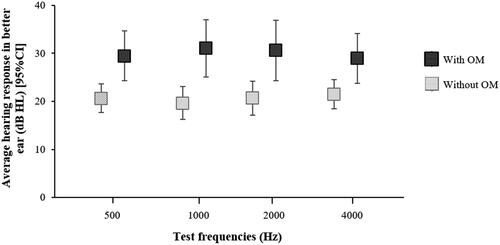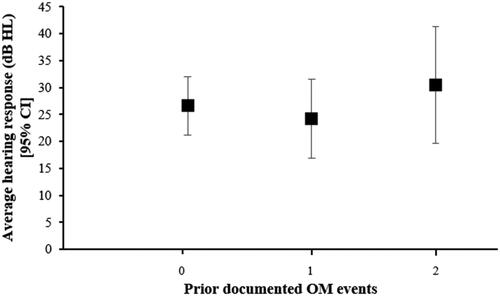Figures & data
Table 1. Sociodemographic, obstetric, environmental characteristics at enrolment or at 2-4-month visit and presence or absence of OM at time of audiological assessment at ∼12 months of age among the 67 infants with and without hearing loss.
Table 2. Number and proportion of infants with hearing loss according to different classifications, using corrected and uncorrected VRA responses in the Djaalinj Waakinj cohort study (n = 67).
Table 3. Tympanometry results for each assessment time-point among 67 infants who had an audiological assessment at ∼12 months of age.
Figure 1. Average corrected hearing responses (dB HL) of infants in the Djaalinj Waakinj study with OM (n = 35) and without OM (n = 30) at ∼12 month of age.

Figure 2. Average hearing response levels (dB HL) at ∼12 months of age among infants that had no prior OM, OM at either 2-4 or 6-8 months (1 prior event) or OM at both 2-4 and 6-8 months (2 prior events) (n = 38).

